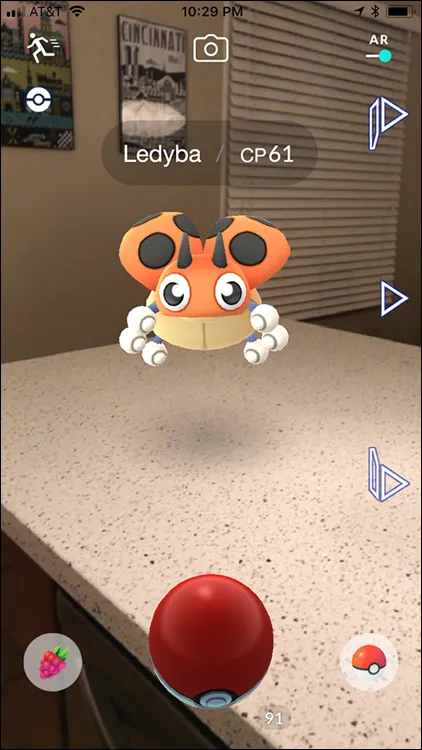IN THIS CHAPTER
Understanding what virtual and augmented reality are Explaining some other related terms Reviewing the history of virtual and augmented reality Understanding the technology hype cycle and the fourth wave When you picture “technology of the future,” what are the first things that come to mind? In ten years, how will technology be affecting your life differently than it does today?
Some people may picture self-driving electric cars that at a word automatically whisk them off to their desired destinations. Others no doubt envision an artificial intelligence (AI) utopia in which robots perform the menial labor tasks humans have had to do in the past, freeing people up to tackle life’s tougher problems.
Finally, many people may foresee a future where they’re able to create their own realities. They could be sitting on a couch at home but put on a headset and feel as if they’re at a soccer stadium thousands of miles away. They could put on a pair of high-tech glasses and have a fully realized holographic avatar of a friend appear to chat with them. They may even picture an entire room they could step into and dial up an environmental simulation as if they were actually there.
The average person may not have had a chance to experience this just yet, but nearly everyone can envision virtual reality (VR) and augmented reality (AR) as part of humanity’s future. And with good reason. For years, entertainment such as movies, TV shows, and books have been selling us on the promise of VR — the VR OASIS of Ready Player One, the VR real-world simulations of The Matrix, the full-blown environmental re-creation of the holodeck from Star Trek… . All types of entertainment have their take on what has, up until very recently, been the stuff of magic and imagination.
The ideas of VR and AR themselves seem outlandish. Within the comforts of my own home, I can put on a headset and be anywhere? Experience anything? Be anyone? Attend live concerts or sporting events as if I were there? Fly across the sea and explore other countries? Travel through entire solar systems in minutes, jumping from planet to planet? These are the kinds of VR and AR that the public has long been promised. But until recently, that promise has fallen short of, well, reality.
Within the past few years, however, computing and manufacturing technologies have begun to catch up with the promises of VR and AR. What was once the purview of science-fiction has been brought to life. Science-fiction writer Arthur C. Clarke once claimed, regarding the wonders of new technology, “Any sufficiently advanced technology is indistinguishable from magic.” If you were to travel back in time and show an iPhone to a medieval peasant, he would think you were a wizard with a magical picture box. And today, many first-time users of high-end consumer VR headsets often describe the experience as nothing less than “magical.”
Within the next decade, we can expect massive changes in how we work, how we’re entertained, and how we communicate, all due to VR and AR. These technologies will fundamentally change where we’re headed as a society. But in order to do so, they need creators — dreamers, innovators, and magic makers — to help them reach their potential.
Before you dive into all the details of VR and AR, you need a basic overview of these technologies. This chapter helps you recognize the different types of VR and AR and provides you with some basic vocabulary for differentiating and discussing them. This chapter also provides a brief historical overview, so you can understand how we arrived at this current place in technological history. Finally, it explains the Gartner Hype Cycle, a way of understanding how technological innovations tend to grow and change, and how the Gartner Hype Cycle applies to emerging technologies such as VR and AR.
Introducing Virtual Reality and Augmented Reality
Virtual reality is often used as an umbrella term for all manner of immersive experiences, including many related terms such as augmented reality, mixed reality, and extended reality. In this book, however, when I refer to virtual reality, I generally mean an immersive computer-simulated reality that creates a physical environment that does not exist. VR environments are typically closed off from the physical world in the sense that the environments they creates are wholly new. Although the digital environments could be based on real places (such as the top of Mount Everest) or imagined ones (such as the underwater city of Atlantis), they exist apart from the current physical reality.
Figure 1-1 shows an example of a VR environment. It’s a screen shot of Wevr’s VR experience, The Blu, which allows users to explore undersea coral reefs and ocean depths, including an encounter with an 80-foot whale.
Augmented reality is a way of viewing the real world (either directly or via a device such as a camera creating a visual of the real world) and “augmenting” that real-world visual with computer-generated input such as still graphics, audio, or videos. AR is different from VR in that AR augments (adds to) a real-world or existing scene instead of creating something new from scratch.
By strict definition, in AR, the computer-generated content is an overlay on top of the real-world content. The two environments have no way of communicating with or responding to one another. However, AR’s definition has been somewhat co-opted in recent years to also include a more blended hybrid called mixed reality, in which interaction can occur between the real world and digitally augmented content.
In this book, when I refer to
augmented reality, I use it as a blanket term that includes mixed reality as well. The two terms are often used synonymously within the industry as well, with
mixed reality rapidly gaining favor as the more descriptive term for the combination of analog and digital realities.
Figure 1-2 shows an example of one of the most popular recent examples of AR, Pokémon Go, which places a digital Pokémon character within your real-world environment.







